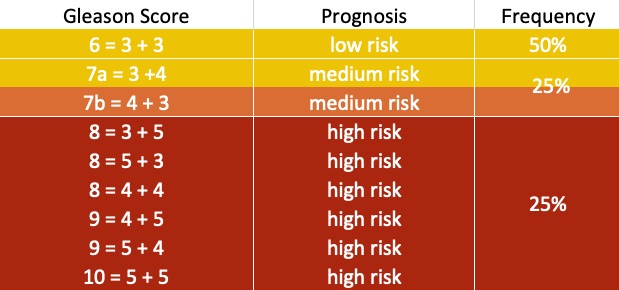survival rate gleason score 7
To promote equity and diversity among authors reviewers and editors. A relative survival rate compares people with the same type and stage of cancer to people in the overall population.
Some cells look abnormal.
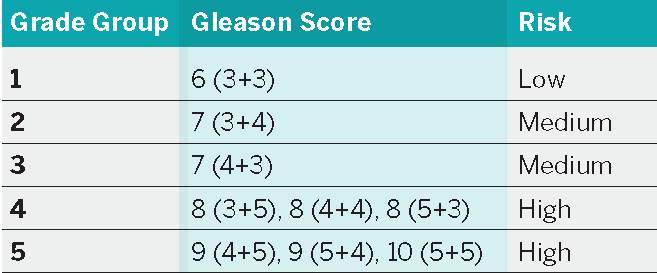
. Gleason score 9 or 10 or 4 5 9 5 4 9 or 5 5 10 Grade Group 5. The 5-year survival rate is nearly 100 percent. A Gleason 7 34 has a more favorable risk level than a Gleason 7 43.
What Does It Mean To Have A Gleason Score Of 6 Or 7 Or 8. The PSA score for stage 2 is less than 20 ngmL. These cancers may be called well-differentiated or low-grade and are likely to be.
Stage 2 cancer is further divided into three phases depending on the grade group and Gleason scores. A Gleason score of 7 is a medium-grade cancer and a score of 8 9 or 10 is a high-grade cancer. Traditionally for prostate cancer this has been done using the Gleason Score which was developed in the 1960s.
Under this system cancerous cells are categorized on a scale from 1 to 5. Epub 2017 Dec 7. The last row Score logrank test is the result for the log-rank test with p0011 the same result as the log-rank test because the log-rank test is a special case of a Cox PH regression.
The cells look less like normal prostate cells. Your risk level is based on the distribution of grade 3 and grade 4 samples. He will typically undergo 7 weeks of IMRT radiation where the control rate is about 30.
Considerations for Active Surveillance. Patel HD Tosoian JJ Carter HB Epstein JI. The time from initial diagnosis to treatment in the study ranged from 745 months to 1079 months.
Is it time to consider active treatment. Of the 353 patients with T1c 66 of the patients were in the Gleason group of 2-6 27 had a Gleason score of 7 and 7 had a Gleason score of 8-10. Dropping Psa Score With Gleason Score Of 7.
A new Gleason score of 34 means that grade 3 low risk is still the most prominent type of tissue in your biopsy. At stage 2 the PSA score is usually less than 20 ngmL and the Gleason score can be 6 7 or 8 grade group 2 3 4. The 5-year relative survival rate for prostate cancer stages I to IVA is almost 100.
The cancer is likely to grow at a moderate rate. The mission of Urology the Gold Journal is to provide practical timely and relevant clinical and scientific information to physicians and researchers practicing the art of urology worldwide. No patient had died of prostate cancer and the 10-year all-cause survival rate was similar to that observed in healthy patients 60 to 79 years old undergoing radical.
The median duration of patient survival is estimated to be between 12 and 18 months with maximal treatment but those without any intervention die soon after diagnosis34 So far very few cases of curative outcome or long-term survival have been reported567 In a large retrospective study Scott et al estimated that 22 of the cohort. The survival rate is still near 100 percent. To provide a platform for discussion of current ideas in urologic education patient engagement.
As a percentage of all patients with prostate cancer stage T1c continually increased from 6 in 1989 to 47 in 1999. Gleason score 7 or 4 3 7 Grade Group 3. Those treated previously with RT was a.
Gleason score 347 tumors still have a good prognosis although not as good as a Gleason score 6 tumor. Among patients who received prior RP the 3-year survival rate was 896. For small N they may differ somewhat.
Comparison of Pathological and Oncologic Outcomes of Favorable Risk Gleason Score 3 4 and Low Risk Gleason Score 6 Prostate Cancer. For large enough N they will give similar results. Those aged less than 49 years old had a 956 10-year survival rate while those aged more than 80 years old had an 827 10-year survival rate.
The majority of patients in the study had an ECOG performance status of 0 rather than 1 and a Gleason score 7 rather than 7. How can a PSA drop with a Gleason score of 7. Therefore for a sample of 100 patients treated with surgery if the failure rate from surgery is 30 30 patients will receive second treatment of radiation and.
How does this impact my risk level. Stage 2 cancer is further divided into three phases depending on the grade group and Gleason scores. The lowest Gleason Score of a cancer found on a prostate biopsy is 6.
In the group of patients older than 70 years with Gleason score 7 more patients died of prostate cancer during 10 years of follow-up compared with other causes. The survival rate is still near 100 percent. Adverse Pathologic Findings for Men.
The cancer might grow quickly or at a moderate rate. Gleason grade 3-10 The survival tree produced. The PSA score for stage 2 is less than 20 ngmL.
The biopsy showed that the cancer had attacked the nerves. Gleason score 8 or 4 4 8 Grade Group 4.

Comparison Of Gleason Score V S Gleason Grade Group For Prostatic Carcinoma A Tertiary Health Care Centre Study Semantic Scholar

Gleason Score Concordance Of Biopsy And Radical Prostatectomy Download Table

Comparison Of Gleason Score V S Gleason Grade Group For Prostatic Carcinoma A Tertiary Health Care Centre Study Semantic Scholar

Predictors For Downgrading Of Gleason Score 7 Prostate Biopsies Download Table
Grade Or Gleason Score And Prostate Cancer

External Beam Radiation Therapy For Prostate Cancer Horwitz 2000 Ca A Cancer Journal For Clinicians Wiley Online Library

Prostate Cancer Mortality Rates According To Prostatectomy Gleason Score Download Table
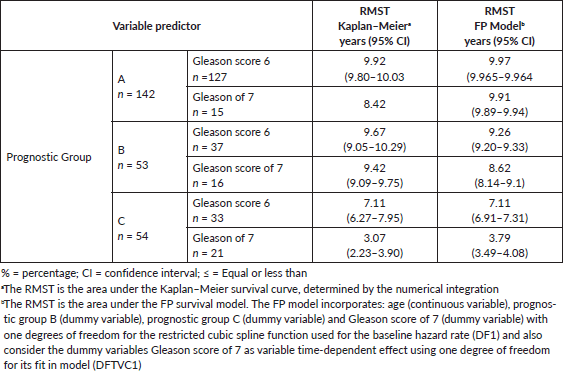
Subtypes Of Minimal Residual Disease Association With Gleason Score Risk And Time To Biochemical Failure In Pt2 Prostate Cancer Treated With Radical Prostatec

Staging And Grading Prostate Cancer Research

Gleason Score Radiology Reference Article Radiopaedia Org
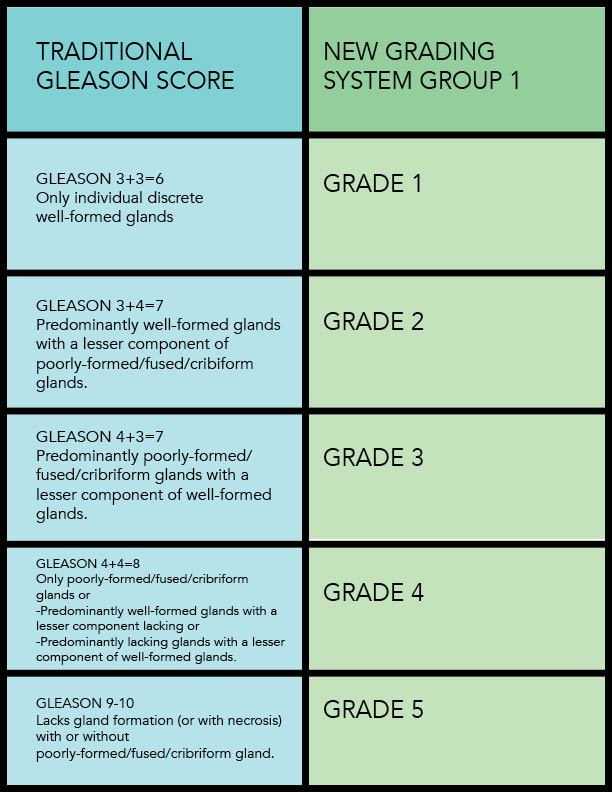
Gleason Score Prostate Conditions
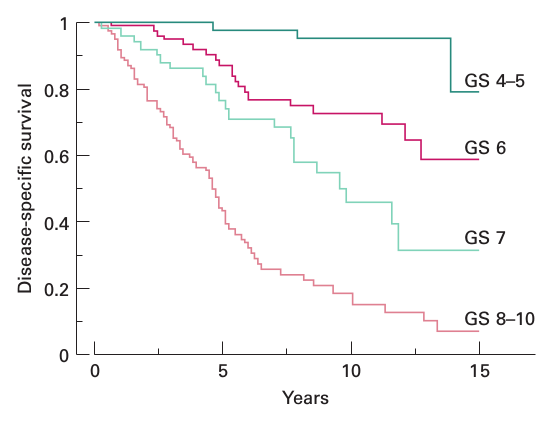
Prostate Cancer Decision Matrix Danwahl Net

Characteristics Of Patients With Biopsy Gleason Score 7 Regarding Download Table

Evaluation Of Gleason Grade Group 5 In A Contemporary Prostate Cancer Grading System And Literature Review Clinical Genitourinary Cancer
